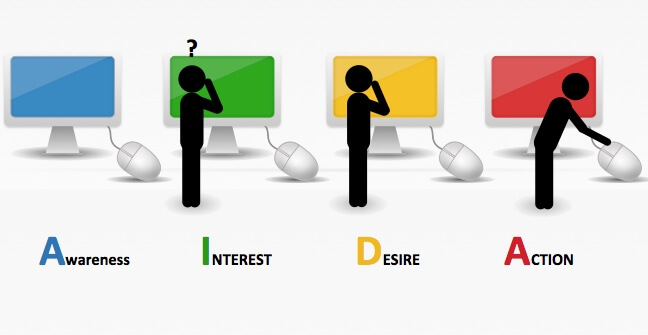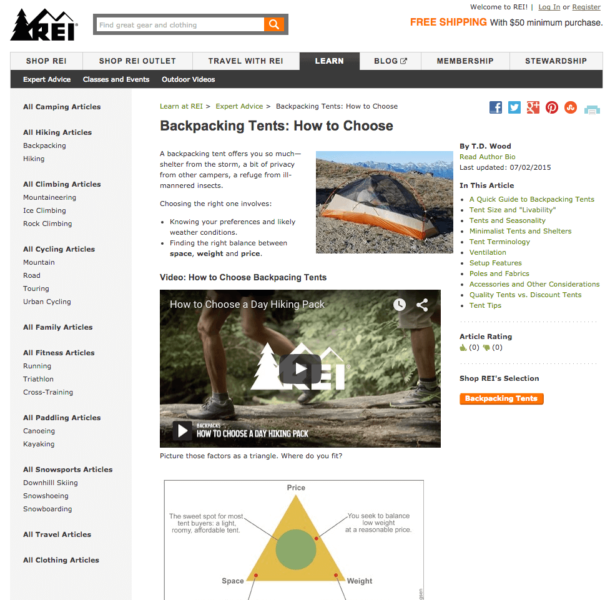Search, Content & Customer Experience – Moving Prospects From Awareness To Action
To reach your SEO goals, your landing pages must map to search terms tied to the appropriate stage in the customer journey. Columnist Jim Yu explains how to achieve this.
The past two years have been filled with Google algorithm updates designed to improve the user experience.
The Hummingbird update’s intent was to better understand queries so that users could be directed towards more helpful pages. The Penguin and Panda updates both sought to eliminate low-quality content that managed to work its way to top-ranking positions.
Google’s main aim with these algorithm changes is to help the end user find the best content possible. Content drives online marketing efforts, and the customer experience is key to Google’s success.
The customer experience dictates how customers see a brand and how they feel about it. In fact, CMOs questioned for a February 2015 Duke University survey believed that two of consumers’ top three priorities are superior customer service and a trustworthy relationship.
Content for its own sake is out. Content to improve the experience of customers is in.
Your primary goal in developing your content strategy should be communicating with your customers. That means listening to what they have to say, responding to them and making them happy. By placing the customer first, you will notice multiple benefits:
- Your content will better fit the needs of your visitors, which means your site will be safer from algorithm updates meant to encourage you in that direction.
- You will increase engagement with current visitors.
- You will create a better customer experience, producing more brand advocates and positive reviews — and positive reviews can increase the odds of someone making a purchase by as much as 58 percent, according to a TrustPilot case study.
Creating content for the customer experience means meeting customers where they are, both in terms of the sites they visit and their progress towards making a purchase.
The Necessity Of Creating A Holistic Experience
If your primary concern lies with the user’s experience, then you must recognize the value of a holistic look at marketing. You must be willing to engage your customers wherever they might be, even when they’re not on your website. Sometimes customers might come across your postings on social media or other alternate channels and may not want to click through to your main site.
You have a choice: You can either engage these potential leads or you can watch them leave.
Taking a holistic approach to your marketing effort means addressing the needs of consumers, regardless of the platform on which they interact with the brand. While bringing people to your website should always be an objective geared to attracting customers, you also need to offer content that will help and engage them off-site, too.
As you calculate the success of your marketing efforts, you need to take into account how customers respond to your content. That will give you a more accurate picture of your performance.
Aligning Content To The Customer Journey — AIDA
There are four main phases that your customers will pass through as they prepare to make a purchase. Knowing what people search for and what they are interested in finding during each phase can help you better engage these visitors. At each phase, you can create content that addresses their needs, building your relationship and solidifying a sale.
Awareness
The Awareness phase is the first step on your customers’ journey. This is when customers are most likely to use informational searches. They are just beginning the process of researching products and services that can help them resolve a particular pain point. The keywords used for this phase tend to be more general, like:
- What is [keyword]?
- Definition of [keyword].
- Head terms.
These visitors are most interested in reading content that gives them an informative and engaging exploration of the topic in which they are interested. That is why in-depth articles, certain infographics and videos can be excellent types of content for this phase.
For example, consider IBM. The brand ranks in position two for “BYOD” — bring your own device. It has a page dedicated to exploring the topic, and users can then download a free white paper to learn more.
“BYOD” or “Bring You Own Device” is a term that suggests that an IT manager or CTO is just starting to investigate their options. To address this, IBM has a page dedicated to explaining what BYOD is and why it’s important for business. This builds a relationship with a user before they have become a customer.
- IBM then offers visitors a form to obtain a free white paper with information that moves the user along the funnel.
- IT managers and CTOs are going to do their research online but will actually make their final purchase on the phone.
- That makes this form critical for IBM to track the influence of organic search on final sales.
Interest
As people progress to the Interest Phase, they begin to move from making informational searches to using navigational queries. They have now interacted with your brand enough that you are a viable option in their minds.
They are interested in fleshing out the leading brands and determining what makes your company worthwhile. Keywords that will apply most for this phase include phrases like:
- What is the difference between [competitor brand] and [your brand]?
- What is the best [keyword]?
- How does [competitor brand] compare to [your brand]?
You want to produce content that positions your brand as an industry and thought leader — someone people can trust when they want help solving their problem. Take REI as an example.
REI ranks in Position 1 for “how to choose a backpacking tent.” By offering a guide on how to select a tent and offering a series of “expert” guides, this establishes REI itself as an expert and moves the user along the funnel. The page still includes links to buy if users are ready to purchase already.
Desire
When people move from the Interest Phase into the Desire Phase, they will begin making commercial investigations through the search engines. They have a good idea what might fit their needs, but they are not yet ready to complete their purchase. Visitors will be using keywords like:
- [Keyword] demo.
- [Keyword] video.
- Reviews of [keyword].
These customers are interested in learning more to help them make their final decision. They want to review content that guides them through their choices and helps them understand why your brand is worthy of their investment.
For example, Verizon now ranks in position one for the keyword “android cell phones.” To engage visitors who might be interested in finding a new mobile phone, the brand produced a comparison tool to help people navigate the product matrix.
Customers can narrow down the options available and then easily use the website to move from the Desire Phase to the final Action Phase.
Action
Customers who are using search engines in the Action phase know exactly what they want to find, so they use transactional queries. Common keywords include:
- The SKU.
- The product name.
- Buy [product].
These customers want to find a page that makes it easy and painless to complete their transaction. Think about the transactional pages you find on Nike.com as an example.
- Nike is ranking in position 1 for “Nike flyknit free 4.0.”
- Nike has a dedicated product page with images, price and an orange “add to cart” button to drive the final action.
Farther down the page, there is detailed information about the product, including product benefits and details to help answer questions and finalize a purchase.
The customer is now ready to take action.
Building A Plan To Align Your Content To The Customer Experience
Below are a few tips on how to best align your content to the customer funnel.
- Identify Keywords Based Upon Each Phase Of The Customer Journey.
Use keyword research tools to begin identifying keywords for each phase. The suggestions listed above will help you begin the search. Categorize these keywords based upon their most applicable phase. This will give you greater insight into the customers who arrive on your site and the type of information they are interested in finding.
- See How Your Content Relates To Each Phase And Identify Gaps.
Once you have identified your major keywords, you can then begin to see how well your content lines up with the different phases of the customer journey. See if you have any content gaps.
For example, you might find that you have ample articles to attract people performing informational queries in the first phase, as well as well-designed product pages for the end of the journey, but very little for those on the middle phases. Do not forget to look at the content included in your off-site Web presences, such as your social pages.
- Optimize Content For Keywords.
Optimize your existing content for the keywords you targeted in Step 1. Make sure the content addresses the purpose of each phase.
- Develop New Content To Fill Gaps.
Create new optimized content to fill in any keyword gaps that can help you better address the needs of your customers.
- Use Quality Metrics To Monitor Progress.
You will want to use concrete metrics that let you know how well your efforts are performing during each phase of the customer journey. It is important to keep in mind that while there is likely to be overlap between B2B and B2C at certain parts of the funnel, these metrics often differ depending upon their respective sector.
I have created and highlighted KPIs that may be worth tracking below:
Ideally, you can find a holistic platform that will let you track both the interactions on your website and the activities on other Web properties and your Share of Voice. The more you know about how people respond to your content, the better you will be able to map your progress to the customer journey and determine what phases need improvements.
For brands to succeed today in online marketing, they need to stop focusing on content for its own sake and start focusing on the experience of the customers for whom it is intended. That means aligning your content to the customer journey and being willing to expand your interaction with visitors beyond the confines of your website.
When you improve your interactions with your customers, you will build your content and search ranking upon a more firm foundation of success.
Contributing authors are invited to create content for Search Engine Land and are chosen for their expertise and contribution to the search community. Our contributors work under the oversight of the editorial staff and contributions are checked for quality and relevance to our readers. The opinions they express are their own.
Related stories
New on Search Engine Land







